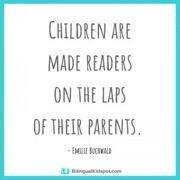 9th January 2026
9th January 2026Reading at Home
 Reading at Home – Top Tips for Parents and Carers
Reading at Home – Top Tips for Parents and Carers
‘Reading for pleasure is the single most important indicator of a child’s success.’ (OECD 2002)
At HWPS we know that you are your child’s first and most important teacher. By supporting your child in learning to read fluently and helping them to develop a love of reading, you are giving them the best possible chance of academic success in the future. However, reading for pleasure and being read to by a grown up, also has a huge impact on children’s wellbeing. It helps them to relax, it builds the bond and connection between you and encourages children to develop empathy by exposing them to unfamiliar characters and settings.
Children who are learning to read will bring home two books a week, one to read with an adult and one to read to an adult. Children who are reading more fluently will bring home one book that they can read to an adult, but will also bring home library books that we encourage you to read and share with them. Here are some helpful pointers to bear in mind when you are listening to your child read aloud:
Include reading as part of your day to day routine to help encourage your child to read regularly:
- Remind your child (with their phonics book) that they know the sounds within it from school
- Encourage them to sound out unknown words before and then blend these sounds
- Re-read books regularly in order to develop their fluency and understanding
- Make time to discuss the text
- Ask questions to support their comprehension
- Encourage them by using positive praise
- Model a positive attitude towards reading
- If your child is tired/reluctant to read then suggest reading a page each or for them to read the speech bubbles
Even if your child is a fluent reader, please still make time to share books with them and read aloud to them. Even the oldest children in our school love the opportunity to hear stories read to them. When reading aloud to your child, here are some things to consider:
- Make reading aloud feel like a treat. Make it a special quiet time and cuddle up so you can both see the book.
- Show curiosity about what you’re going to read: ‘This book looks interesting. It’s about an angry child. I wonder how angry he gets…’
- Read through the whole story the first time without stopping too much. Let the story weave its own magic.
- Read with enjoyment. If you’re not enjoying it, your child won’t. Read favourite stories over and over again.
On later readings:
- Let your child pause, think about and comment on the pictures. • If you think your child did not understand something, try to explain: ‘Oh! I think what’s happening here is that…’
- Chat about the story and pictures: ‘I wonder why she did that?’; ‘Oh no, I hope she’s not going to…’; ‘I wouldn’t have done that, would you?’ • Link the stories to your own family experiences: ‘This reminds me of when …’
- Link stories to others that your child knows: ‘Ah! Do you remember the dragon in ….? Do you remember what happened to him?’
- Encourage your child to join in with the bits they know. (The Reading Framework 2023).












